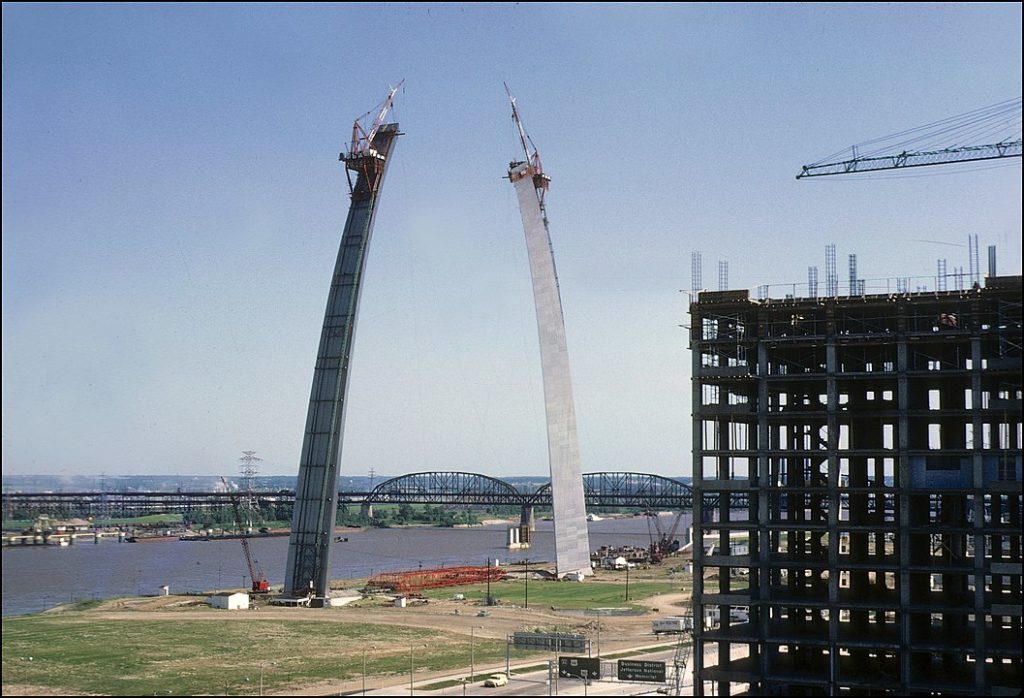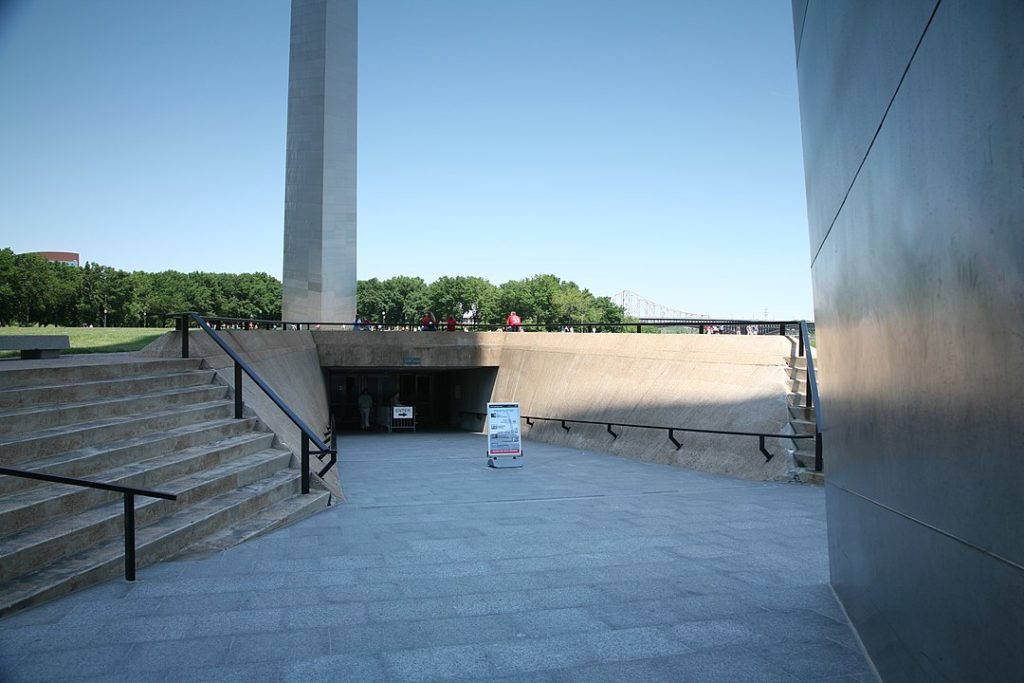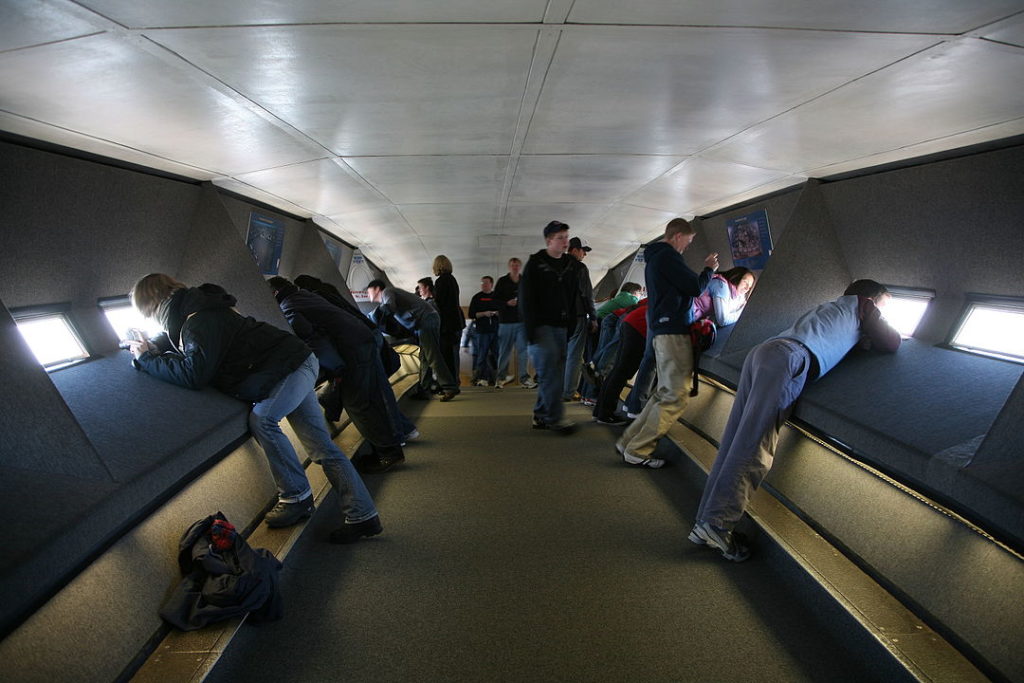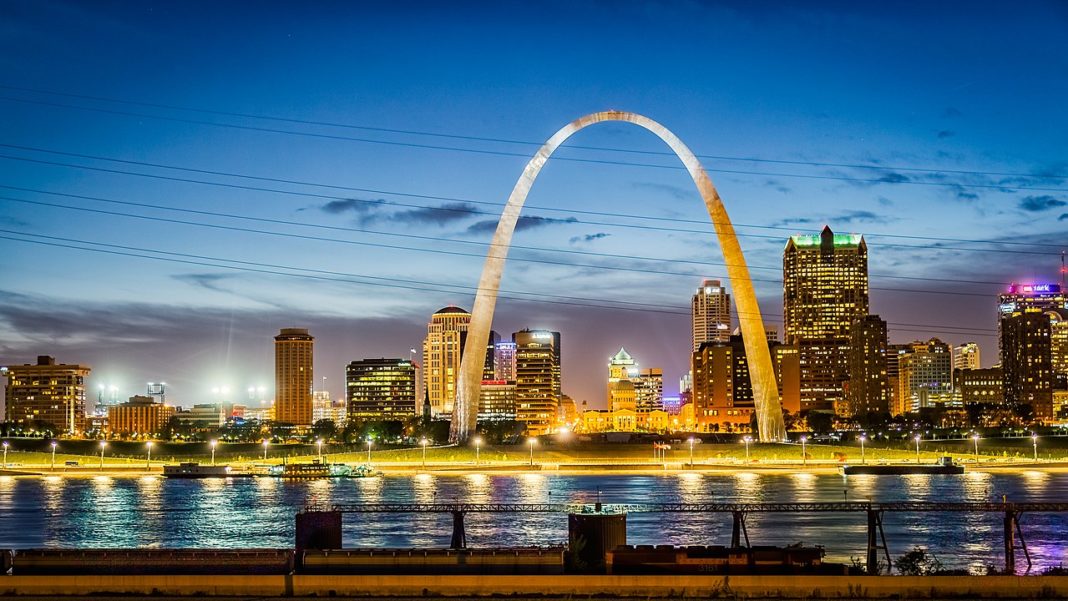Built as a monument to the westward expansion of the United States and officially dedicated to “the American people”, the Arch, commonly referred to as “The Gateway to the West “, is a National Historic Landmark in Gateway Arch National Park and has become an internationally recognized symbol of St. Louis, as well as a popular tourist destination.

The Arch was designed by Finnish-American architect Eero Saarinen in 1947; construction began on February 12, 1963, and was completed on October 28, 1965. The monument opened to the public on June 10, 1967. It is located at the site of the founding of St. Louis on the west bank of the Mississippi River.
The cross-sections of the arch’s legs are equilateral triangles, narrowing from 16 m per side at the bases to 5.2 m per side at the top. Each wall consists of a stainless steel skin covering a sandwich of two carbon-steel walls with reinforced concrete in the middle from ground level to 91 m, with carbon steel to the peak. The arch is hollow to accommodate a unique tram system that takes visitors to an observation deck at the top.

The structural load is supported by a stressed-skin design. Each leg is embedded in 25,980 short tons of concrete 13 m thick and 18 m deep. 6.1 m of the foundation is in bedrock. The arch is resistant to earthquakes and is designed to sway up to 46 cm in either direction while withstanding winds up to 240 km/h. The structure weighs 42,878 short tons, of which concrete composes 25,980 short tons; structural steel interior, 2,157 short tons; and the 6.3mm thick grade 304 stainless steel panels that cover the exterior of the arch, 886 short tons). This amount of stainless steel is the most used in any one project in history. The base of each leg at ground level had to have an engineering tolerance of 0.40 mm or the two legs would not meet at the top.

In January 1999, MSNBC arranged a temporary lighting system for the arch so the monument could be used as the background for a visit by Pope John Paul II. Since November 2001, the arch has been bathed in white light between 10 p.m. and 1 a.m. via a system of floodlights. Designed by Randy Burkett, it comprises 44 lighting fixtures situated in four pits just below ground level.
The underground visitor center for the arch was designed as part of the National Park Service’s Mission 66 program. The 6,500 m2 center is located directly below the arch, between its legs. The center houses offices, mechanical rooms, and waiting areas for the arch trams, as well as its main attractions: the Museum of Westward Expansion and two theaters displaying films about the arch.
Near the top of the Arch, passengers exit the tram compartment and climb a slight grade to enter the observation area. This arched deck, which is over 20 m long and 2.1 m wide, can hold up to about 160 people, equivalent to the number of people from four trams. Sixteen windows per side, each measuring 180 mm × 690 mm, offer views up to 48 km.

The Gateway Arch is one of the most visited tourist attractions in the world with over four million visitors annually, of which around one million travel to the top. The arch was listed as a National Historic Landmark on June 2, 1987, and is also listed on the National Register of Historic Places.
According to Wikipedia















